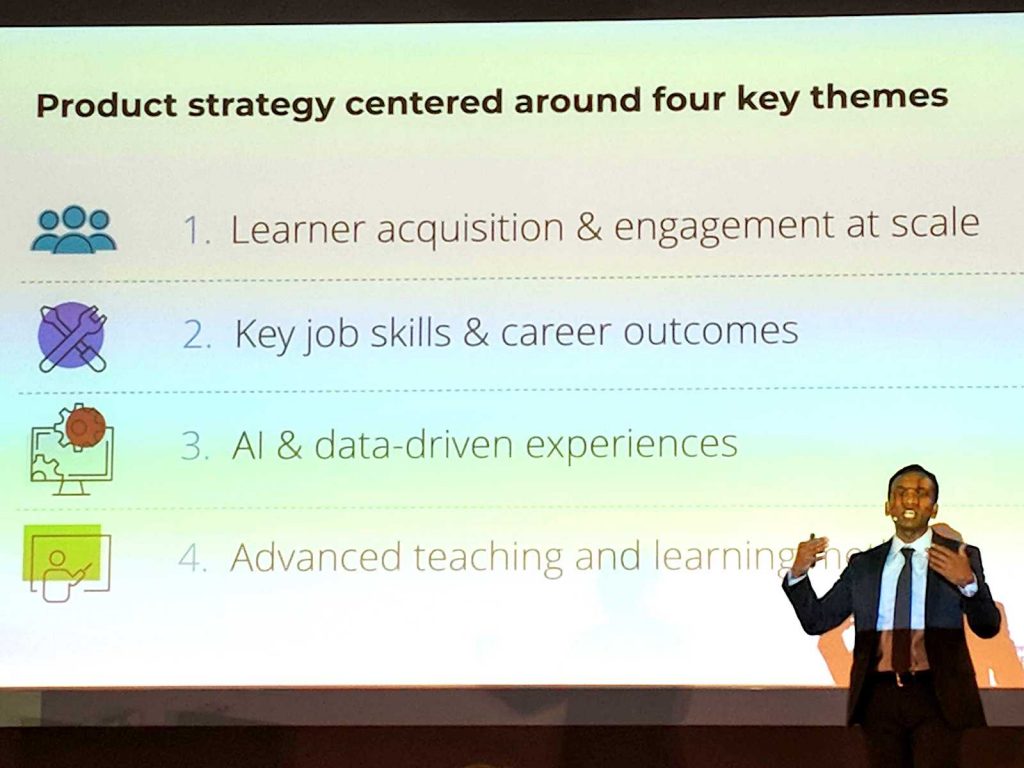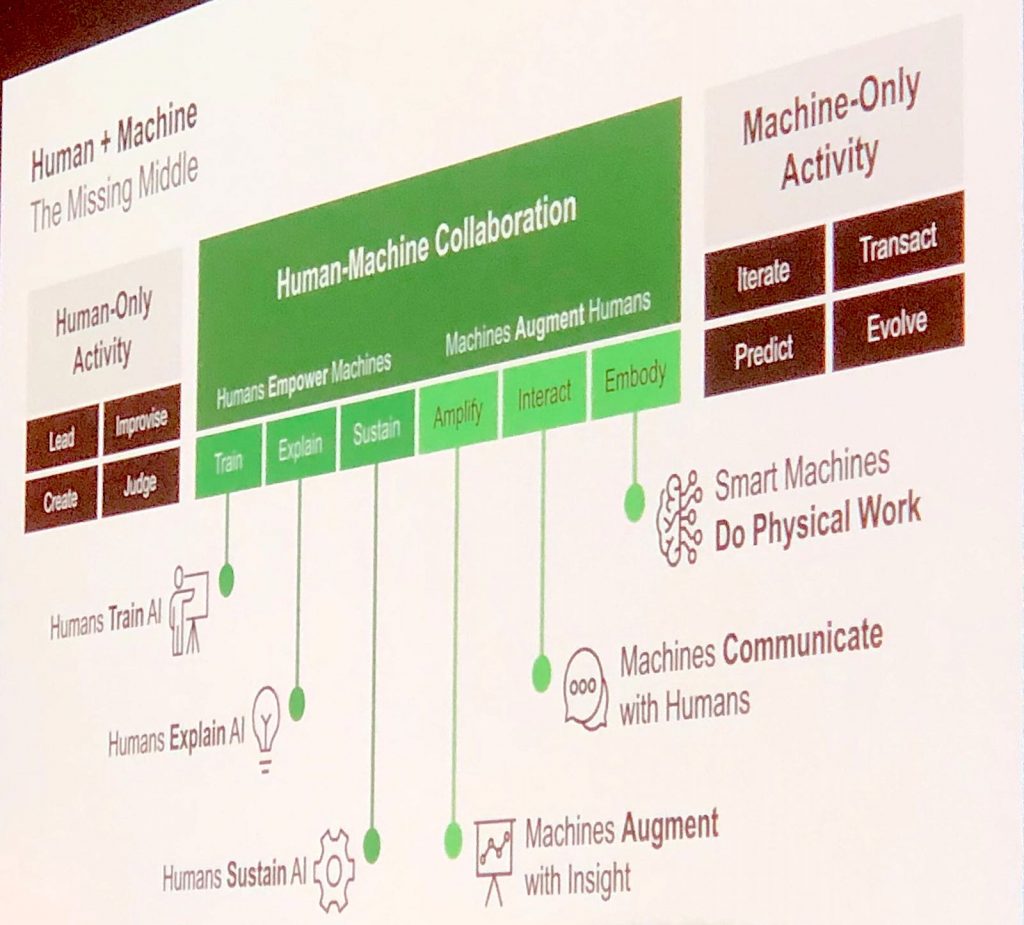Several members of the Duke Learning Innovation team headed to London for the 2019 Coursera Partners Conference. The conference brings together educators and leaders representing over 180 global universities, organizations and companies. Here are some of our top takeaways from the conference.
MOOCs might be dead, but Coursera keeps growing
MOOCs are dead, you say? Coursera’s continued growth suggests otherwise. Coursera’s 190 university and industry partners now offer 3,200 courses, 300 Specializations, and 10 MasterTrack certificates to over 40 million registered learners. In total, Coursera launched more than 800 new courses over the past year.
At this year’s conference, Coursera announced two new degrees, bringing the total number of degrees offered on Coursera to 14. Coursera also announced it is expanding its pilot of Coursera for Partners to 20 additional universities/organizations. Duke was the first to pilot Coursera for Partners when it launched Coursera for Duke in December 2017.

In addition to learner and program growth, Coursera also shared a few new things happening with the platform itself:
- experiments with machine learning and automation to a) help learners find learning experiences most relevant to them and b) encourage learners to persist in and complete courses.
- Coursera Labs, a soon-to-be-released feature that will offer better integrated hosting of learning tools like Jupyter Notebooks.

Universities offering degrees on Coursera discuss benefits, challenges
At this year’s conference, Coursera was clearly focused on highlighting degrees above all their other educational products for higher ed. A couple of breakout sessions featured leaders from universities that are offering degrees on Coursera sharing what that experience has been like.
- Some schools said they launched Coursera degrees to rapidly mature their online offerings. Others did it to engage audiences they didn’t otherwise know how to reach. A common goal was to reach a more global audience.
- With Coursera, schools are rethinking how degrees work. The online MSc in Electrical Engineering offered by UC Boulder, for example, has no selective application process. The degree program is totally open and performance-based.
- Schools with new Coursera degrees are figuring out how to offer student services to their new global student body. Many already have online students or a large student body, so there’s not a lot of new burden on services. But some services require outsourcing or new ideas. For example, how can you provide mental health services and career counseling to students online and all over the globe? Several schools have used surveys to determine what services online learners want most. The University of Pennsylvania surveys students before their program starts to get a sense of where students think their biggest needs are. Recent surveys found the largest demand for career services and for resources and help with time management.
AI and machine learning on center stage and behind the scenes
Much of the conversation at the conference was related in some way to artificial intelligence and machine learning: how it will impact the future of work; what it means for educational institutions. Andrew Ng, a computer scientist and one of Coursera’s original co-founders, gave a keynote on AI and the future of learning. Ng said AI will be the new electricity, transforming the world. He also described AI as “automation on steroids.” He made a distinction between artificial narrow intelligence (like smart speakers and self-driving cars) and artificial general intelligence (which could do anything a human can do). According to Ng, we are nowhere close to having artificial general intelligence. Our fears about evil sentient robots, according to Ng, are overblown.
Our fears about AI disrupting the world of work, however, are not. Anything a typical person can now do with less than a second of thought can probably be automated. There’s a global shortage of people with skills in AI. Ng sees potential in AI, though, for offering personalized career advice or sophisticated writing and editing help.

Coursera shared about their many experiments leveraging machine learning to improve it’s own platform. One particularly interesting effort uses machine learning to reduce drop-off rates in Coursera courses. Coursera looked at its enormous cache of user data to analyze drop-off behavior. They found drop-off clusters early in a course and during graded assignments. They also identified three kinds of learners they primarily see dropping off in courses, which they call dabblers, explorers, and non-starters.

Using these machine learning algorithms, Coursera can automatically identify learners who are at risk of dropping off and figure out how and when to intervene. These interventions are primarily messages like emails that get automatically sent to learners when they do something that suggests they are going to drop off in the course.
During their recent experiments, Coursera sent 1.5 million of these messages per month. One of the messages increased module completion by 10%. Coursera is continuing to experiment with these nudges by letting learners customize the messages they receive by adding goals (ex: I want to watch all the course videos; I want to complete the first assignment).

Want to find out more about how Learning Innovation’s relationship with Coursera is enhancing learning on campus and around the world? Learn about active projects on our Year in Progress page, sign up for our newsletter to get monthly updates, and follow us on Facebook and Twitter.
